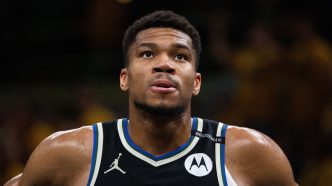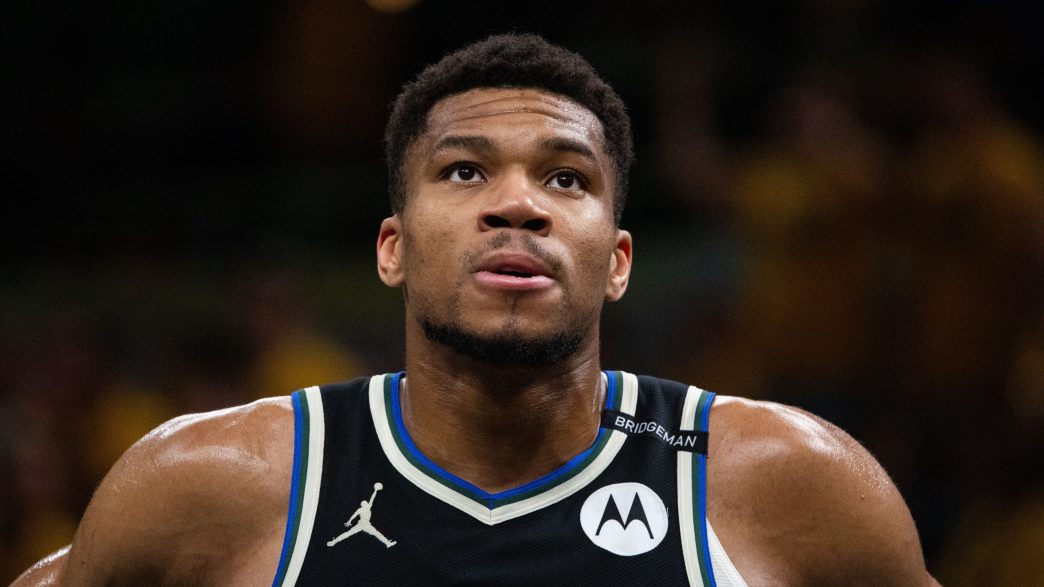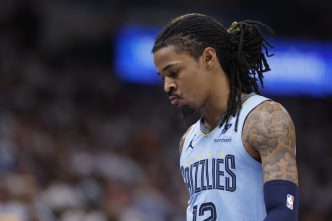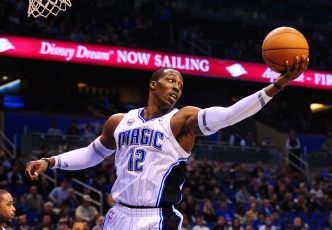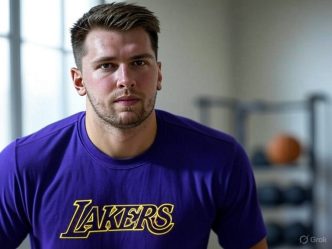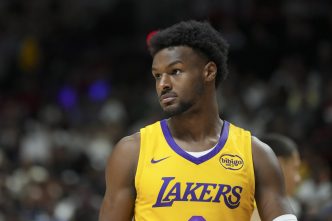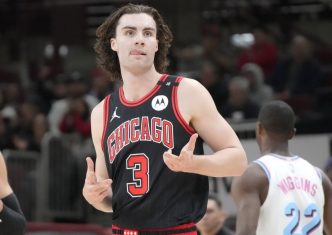Giannis Antetokounmpo sat on the sidelines, lost in thought as the game clock ticked down in Game 4 of their first-round playoff series against the Indiana Pacers. With nine minutes left in the fourth quarter, the two-time MVP had finally taken a breather since halftime, and the emotion was palpable. During the third frame, he showcased his offensive prowess, racking up 18 points on 5-of-7 shooting while pulling down 8 rebounds and dishing out 2 assists. In fact, he was directly involved in 24 of the Bucks’ 32 points in that quarter. Yet despite his brilliance, Milwaukee found themselves on the wrong end of a 38-32 score in the third, trailing by 20 points as Antetokounmpo sat on the bench, arms at his side and eyes fixed ahead, a picture of quiet frustration.
The Bucks’ situation had grown precarious. Antetokounmpo’s stats were still awe-inspiring—averaging 33.8 points, 14.3 rebounds, and 5.0 assists on an impressive 62% shooting throughout the series—especially considering this was his first time back in the playoffs health-wise in three years. However, injury woes were plaguing the Bucks again, and they would soon be compounded by the shocking sight of his co-star, Damian Lillard, going down with a torn Achilles tendon that would cut his season short. This moment of loss and instability weighed heavily on the team; several players expressed feelings of deflation after witnessing Lillard’s injury, one that not only jeopardizes next season but also raises questions about the future of Lillard’s career at 34 years old.
The final score of Game 4 was 129-103, marking yet another disappointing exit as they headed into Game 5. Despite Antetokounmpo’s triple-double effort, the Bucks fell in overtime, 119-118, resulting in an all-too-familiar third consecutive early playoff exit. The stakes were high as Antetokounmpo pondered his future and the direction of the franchise heading into a pivotal offseason.
While multiple sources had indicated that Antetokounmpo still felt positive about being in Milwaukee and respected Lillard, the circumstances of the team’s performance couldn’t be ignored. With the Bucks set to have a critical offseason meeting to discuss their future, there was an unmistakable sense that this conversation would carry far-reaching implications. Despite being a dominant force and leading the Bucks to their 2021 championship, the subsequent years had seen the team struggle to replicate that success. Milwaukee had only secured one playoff series win since that championship run, and now they were navigating the unsettling reality of being eliminated early once again.
“It doesn’t feel good, man,” Antetokounmpo reflected after the Game 5 loss. His frustration was evident, and he acknowledged the need for personal improvement, stating, “I just got to look myself in the mirror and I just have to be better. I have to be better.”
Injuries had become an unsettling trend since their championship season. The 2022 playoffs saw Khris Middleton sidelined after spraining his MCL, contributing to a second-round defeat to the Boston Celtics. The following year, Antetokounmpo himself suffered a back injury in the playoffs, which had dire repercussions when the eighth-seeded Miami Heat stunned the top-seeded Bucks. This year was no different, with a calf strain sidelining him right before the start of the playoffs, preventing any chance of a comeback.
In the two seasons following the acquisition of Lillard, the anticipated dynamic duo has remarkably appeared in just two full playoff games together. Antetokounmpo’s competitive spirit has been on full display, as he previously expressed a desire for a second championship. He noted, “Me not having a second championship—if I am not able to help my team win a second ring, I’m letting down myself.” These thoughts resonate not only personally for Antetokounmpo but also for the franchise at large, as his commitment to winning and his expectations for the team’s direction weigh heavily on the organization.
Despite the uncertainty surrounding Antetokounmpo’s future with the Bucks, he has shown a commitment to the franchise, signing two contract extensions, including a supermax deal in 2020 and another in 2023 that keeps him in Milwaukee until the 2027-28 season. Yet, with a variety of challenges ahead, including roster limitations and high-pressure decisions in the front office, questions loom about how the Bucks will effectively utilize Antetokounmpo’s prime.
As Antetokounmpo addressed the media postgame, it was clear he was grappling with the weight of what lies ahead. “I’m not going to do this,” he said, referring to the predictable cycle of questions about his future. “I don’t know, man. I wish I was still playing. I wish I was still competing and going back to work out.”
Beyond the on-court chemistry that coach Doc Rivers sought to build between Antetokounmpo and Lillard, the duo faced the challenge of integrating their styles without stepping on each other’s toes. Early in the season, there was hesitance; each player was careful not to disrupt the harmony required to establish their partnership. However, as the season progressed, they began to connect more fluidly, demonstrating a growing understanding of how to effectively operate as a duo on the court.
The Bucks shook up their roster just before training camp, acquiring Lillard in a bold move that saw them hope to craft one of the most fearsome pairings in the league. But the transition was bumpy. Even though they thrived in moments, their pick-and-roll execution was often inconsistent. Their production—a modest 1.11 points per direct pick—quantified just how much work still lay ahead if they hoped to contend effectively in the playoffs.
Even with Lillard’s successful return and Antetokounmpo’s commanding presence, the injuries once again took their toll. Lillard faced health issues after deep vein thrombosis sidelined him just before the playoffs, an injury that ultimately set the stage for his Achilles tear just four games in.
Head coach Doc Rivers, brought in to unlock the potential of this star-studded roster, faced a tumultuous two seasons, unable to secure playoff victories. Antetokounmpo publicly supported Rivers, reaffirming his faith in the coaching staff, which encapsulated the Bucks’ need to rally cohesively as they move forward.
With offseason changes looming, Milwaukee extended General Manager Jon Horst’s contract, reinforcing their commitment to steady leadership during a crucial juncture. Under Horst’s guidance since 2017, the Bucks have made a series of trades aimed at maximizing Antetokounmpo’s window of opportunity to compete for championships. However, a concerning trend emerged—despite significant efforts, the depth of talent around Antetokounmpo appeared to have diminished since their championship run.
Now, looking ahead, the Bucks must navigate a tight financial landscape, especially with heavy contracts tied to their stars and little flexibility to make impactful changes. A roster with only a handful of guaranteed contracts and questions surrounding player options leaves them at a crossroads.
With the increased competitiveness from the rest of the Eastern Conference, including teams that appear to have surpassed the Bucks, the path forward requires ingenuity and decisive action. The Milwaukee front office is under pressure to find solutions that not only keep the franchise competitive but also ensure that they can properly support Antetokounmpo in achieving his lofty ambitions.
As the dust settles on another disappointing season, the crux of the matter remains: Can Milwaukee revitalize their roster with the necessary pieces to contend once more? The eye of the basketball world turns toward Milwaukee, waiting for news that could reshape a franchise’s future.

